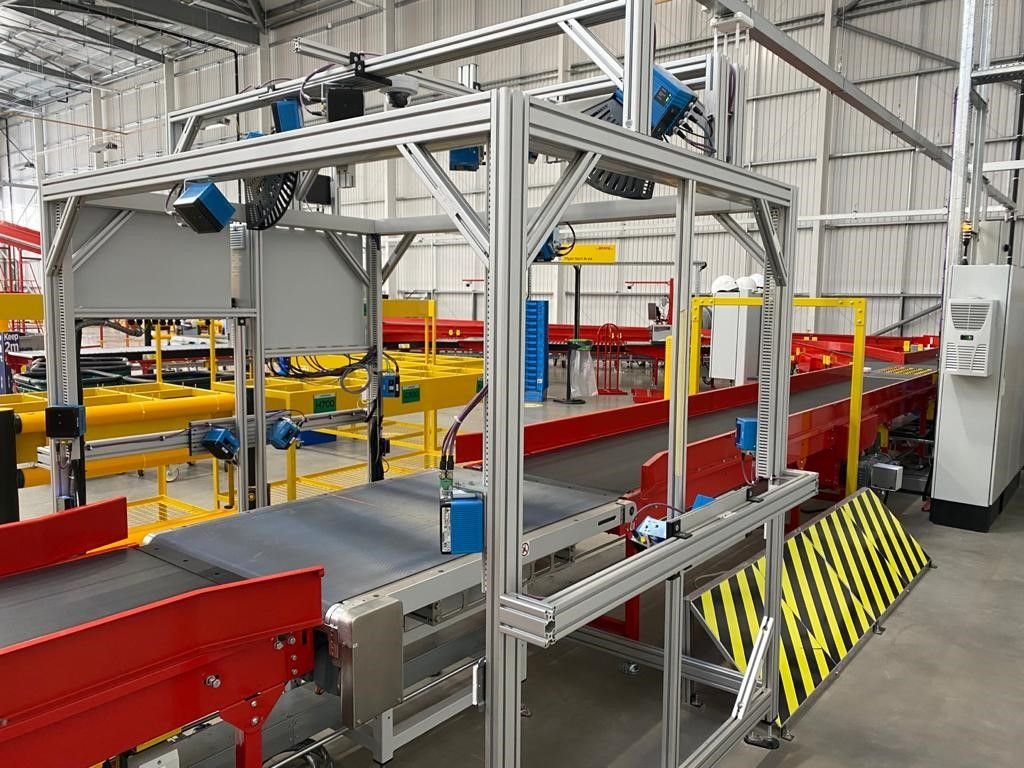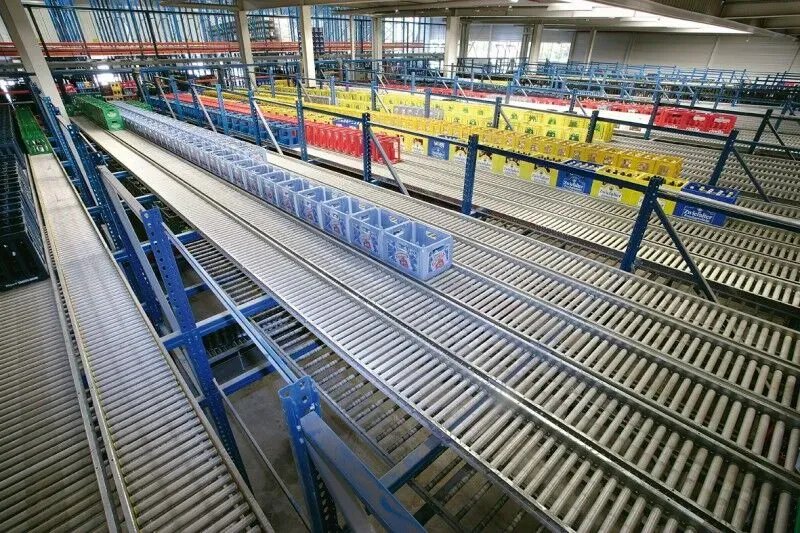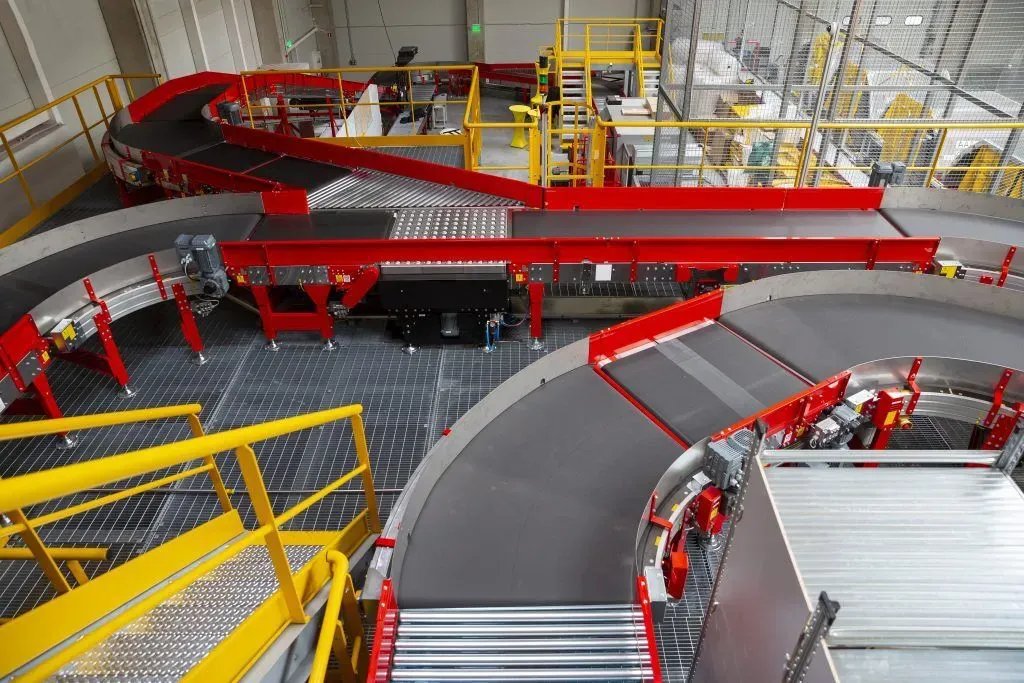1) Belt Conveyors
Belt conveyors are a fundamental conveyor type used in e-commerce warehouses. They consist of a continuous belt made of rubber, fabric, or metal that moves over a series of rollers. Belt conveyors are versatile and suitable for many products, from small items to bulk goods. They are often used for the transportation of products between different stages of the order fulfilment process.
2) Roller Conveyors
Roller conveyors are another staple in e-commerce logistics. These conveyors use a series of rollers to move products along the conveyor line. They are ideal for applications that require the accumulation of products or cases and are commonly used in packaging, sorting, and loading operations.
These are designed to automate the process of sorting products based on predefined criteria such as destination, size, or weight. They utilise various mechanisms, including diverts, pop-up wheels, and pushers, to direct products to their designated chutes or lanes. Sortation conveyors are indispensable in e-commerce warehouses for routing items to the correct shipping area.
4) Slider Bed Conveyors
Slider bed conveyors have a flat, stationary surface (the bed) over which a belt or chain slides. These conveyors are excellent for transporting smaller, fragile items or products with irregular shapes. They are commonly used in e-commerce operations for packaging and order assembly.
5) Flexible Conveyors
Flexible conveyors are adaptable and expandable conveyor systems that can be extended or contracted as needed. They are highly versatile and suitable for loading and unloading trucks, as well as for moving products within a warehouse or distribution centre. The ability to adjust their length makes them valuable in e-commerce logistics, where order volumes can fluctuate.
6) Vertical Conveyors
Vertical conveyors, also known as vertical lifts or elevators, are used to move products between different levels within a warehouse or logistics centre. They are especially useful in multistory facilities, optimising space utilisation and reducing the need for manual lifting and carrying of goods.
7) Spiral Conveyors
Spiral conveyors are designed to transport products in a continuous upward or downward spiral motion. These conveyors save valuable floor space and are employed in e-commerce facilities to move products between different levels or create efficient picking and sorting systems.
8) Automated Guided Vehicles (AGVs)
While not traditional conveyors, AGVs are essential in e-commerce warehouses and logistics centres. These autonomous vehicles move products within the facility, often replacing the need for fixed conveyor systems in certain applications. AGVs are flexible and can adapt to changing layouts and workflows, making them invaluable in the dynamic world of e-commerce.
The e-commerce revolution is only possible with the utilisation of modern conveyors. These systems are the silent heroes of the online shopping experience, working tirelessly behind the scenes to ensure that products are picked, packed, and delivered with speed, accuracy, and efficiency. As e-commerce continues to evolve and grow, the role of modern conveyors will only become more critical. They are the backbone of the e-commerce supply chain, enabling businesses to meet the ever-increasing demands of consumers and providing a seamless shopping experience that has come to define the e-commerce revolution.
However, designing and installing ecommerce logistics solutions can be a daunting task as they rely on a variety of conveyor systems to optimise their operations. This is why systems integrators like L-A-C Logistics Automation exist to help you create a holistic e-commerce solution that suits your business and provide ongoing support to help keep your logistic chain moving. Get in touch with us today!


